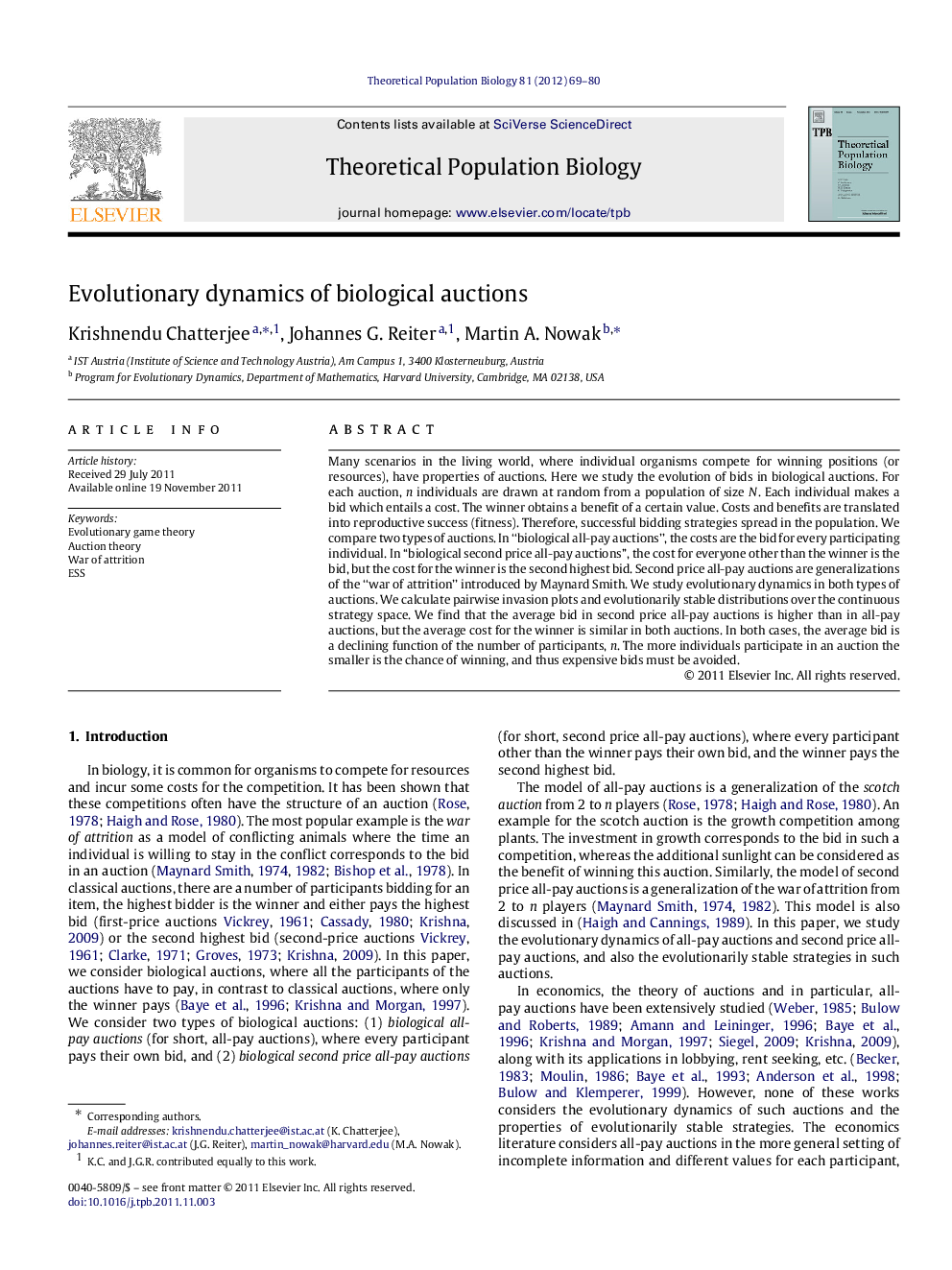| Article ID | Journal | Published Year | Pages | File Type |
|---|---|---|---|---|
| 4502536 | Theoretical Population Biology | 2012 | 12 Pages |
Many scenarios in the living world, where individual organisms compete for winning positions (or resources), have properties of auctions. Here we study the evolution of bids in biological auctions. For each auction, nn individuals are drawn at random from a population of size NN. Each individual makes a bid which entails a cost. The winner obtains a benefit of a certain value. Costs and benefits are translated into reproductive success (fitness). Therefore, successful bidding strategies spread in the population. We compare two types of auctions. In “biological all-pay auctions”, the costs are the bid for every participating individual. In “biological second price all-pay auctions”, the cost for everyone other than the winner is the bid, but the cost for the winner is the second highest bid. Second price all-pay auctions are generalizations of the “war of attrition” introduced by Maynard Smith. We study evolutionary dynamics in both types of auctions. We calculate pairwise invasion plots and evolutionarily stable distributions over the continuous strategy space. We find that the average bid in second price all-pay auctions is higher than in all-pay auctions, but the average cost for the winner is similar in both auctions. In both cases, the average bid is a declining function of the number of participants, nn. The more individuals participate in an auction the smaller is the chance of winning, and thus expensive bids must be avoided.
